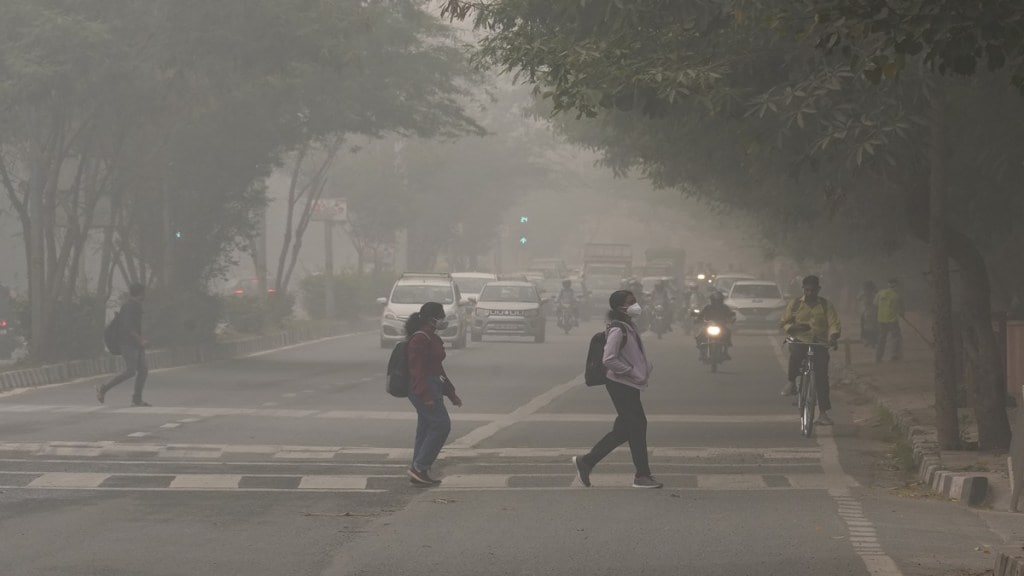Delhi air quality has further deteriorated towards “severe plus” category, prompting considerations for the reimplementation of the odd-even car system.
As of 7 am, the air quality index (AQI) surged to 437, a deterioration from the 419 recorded at 4 pm on Thursday. The 24-hour average AQI, monitored daily at 4 pm, climbed to 401 on Wednesday, following a trend of deterioration from 397 on Tuesday, 358 on Monday, and 279 on Friday.
Attributed to rain, the comparatively better air quality over the weekend was short-lived. Post-Diwali firecracker activity and a resurgence in stubble burning in neighbouring ring states increased pollution levels, compounded by unfavorable meteorological conditions, including calm winds and low temperatures hindering pollutant dispersion.
Neighbouring areas like Ghaziabad, Gurugram, Greater Noida, Noida, and Faridabad also reported very poor to severe air quality levels.
Delhi Environment Minister Gopal Rai has hinted at the return of the odd-even car rationing measure if the AQI surpasses 450. This measure, last enforced in 2019, allows cars to operate on alternate days based on their registration numbers.
A joint project by the Delhi government and IIT-Kanpur revealed that vehicular emissions accounted for approximately 38% of the city’s air pollution on Wednesday, decreasing to 25% on Thursday.
Secondary inorganic aerosols, such as sulfate and nitrate, emerged as the second major contributor, constituting 30 to 35% of recent air pollution.
Despite measures like a construction ban and restrictions on diesel trucks, Delhi’s air quality persisted in its decline. According to IQAir, Delhi ranked as the most polluted city globally on Thursday.
The India Meteorological Department (IMD) forecasts little relief in the coming days due to calm winds and low temperatures. An improvement in wind speed from November 21 onwards may bring a reduction in air pollution levels.
A Pune-based system indicated that stubble burning contributed 7.5% to Delhi’s air pollution on Thursday, expected to decrease to 3.5% on Friday and 3% on Saturday.
The Commission for Air Quality Management (CAQM) affirms that measures under the Graded Response Action Plan (GRAP) will persist in Delhi.
In response to the growing air pollution, the Delhi government has established a six-member special task force (STF) to ensure strict GRAP implementation. The STF, headed by Delhi’s special secretary (environment), includes officials from transport, traffic, revenue, Municipal Corporation of Delhi, and Public Works Department.
Medical experts said that inhaling Delhi’s polluted air is equal to smoking about 10 cigarettes daily. Prolonged exposure increases the risk of respiratory problems, cardiovascular disease, and shortens life expectancy, as highlighted in a report by the Energy Policy Institute at the University of Chicago.
(With inputs from PTI)


